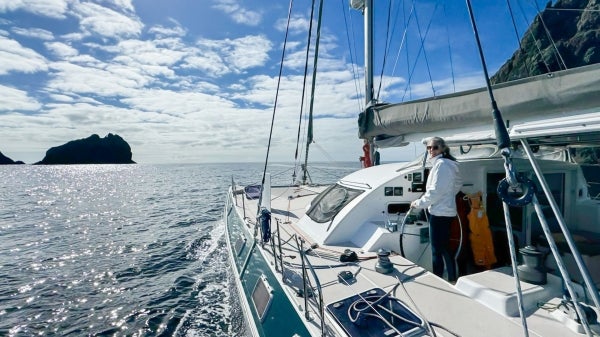New study on Arctic’s ‘Last Ice Area’ highlights the urgency for reducing warming

A mother polar bear and cub on the edge of an iceberg in the Viscount Melville Sound, Nunavut, Canada, high arctic polar region, a part of the "Last Ice Area." Photo by karenfoleyphotography
The Arctic’s “Last Ice Area” — a vital habitat for ice-dependent species — might disappear within a decade after the central Arctic Ocean becomes ice-free during summer, which is expected to occur sometime around mid-century.
A new study, published in Nature and co-authored by Arizona State University Foundation Professor Stephanie Pfirman with colleagues from McGill University and the Lamont-Doherty Earth Observatory at Columbia University, discovered through the use of a high-resolution model that the degradation of this substantial ice area north of Greenland could be accelerated by nearly a decade compared with previous models.
“Originally, we thought that sea ice might persist in this region much longer than the rest of the Arctic,” said Pfirman, deputy director of the School of Ocean Futures in ASU's College of Global Futures. “This research shortens the time that the Last Ice Area can function as a safe space for ice-associated species between now and when we are able to stop global warming.”
The stability of this region is crucial for preserving the Arctic ecology, as it provides a suitable habitat for ice-dependent and ice-obligate species, including polar bears, belugas, bowhead whales, walruses, ringed seals, bearded seals and ivory gulls.
In 2019, the Canadian government designated a portion of the Last Ice Area as the Tuvaijuittuq Marine Protected Area. In August 2024, interim protection for this area was extended for up to five years while the government of Canada works with partners to consider long-term protection. Inuit communities are deeply invested in protecting this unique ecosystem. Environmental organizations, including the World Wildlife Fund, have also long campaigned for the protection of the entire Last Ice Area to support the resilience of the Arctic’s biodiversity.
"Our findings were based on high-resolution models, which consider sea ice transport through the Canadian Arctic Archipelago,” said Bruno Tremblay, professor in the Department of Atmospheric and Oceanic Sciences at McGill University, who co-led the study. “These suggest the LIA may vanish much sooner than previously thought.”
These new simulations reveal that a significant fraction of the remaining thick ice of the Last Ice Area may flow southward through the archipelago, leading to the potential flushing of the sea ice of the Last Ice Area over a decade or so. This quick flushing through islands of the Canadian Arctic Archipelago is only possible when reaching continuous ice-free conditions over the central Arctic Ocean, the researchers said. Maintaining some thick ice in the central Arctic is essential to protect the Last Ice Area, as it hinders sea ice transport through the archipelago, they added.
“These findings underscore the urgency of reducing warming to ensure stable projections for the LIA and for critical Arctic habitats,” said Madeleine Fol, lead author of the paper, which was her Master of Science thesis at McGill University in Montreal.
Fol and her co-authors were also invited to submit a Behind the Paper article in Springer Nature Research Communities.
More Environment and sustainability

Adventurer and space visionary embarks on a new journey at ASU
Julia Tizard Hunter is an explorer in every sense of the word.In fact, Hunter’s most recent adventure was a 10-month voyage across the Pacific Ocean with her husband and two sons, aged 8 and 10 years…

ASU event to highlight importance of urban climate research
Arizonans need look no further than their neighbor state to the west to understand why urban climate research is important.As the fallout from the LA wildfires continues to bring new challenges to…

Depending on a car could be impacting your life satisfaction
A viral research study led by Rababe Saadaoui, a PhD planning student in Arizona State University's School of Geographical Sciences and Urban Planning, has uncovered a link between car…